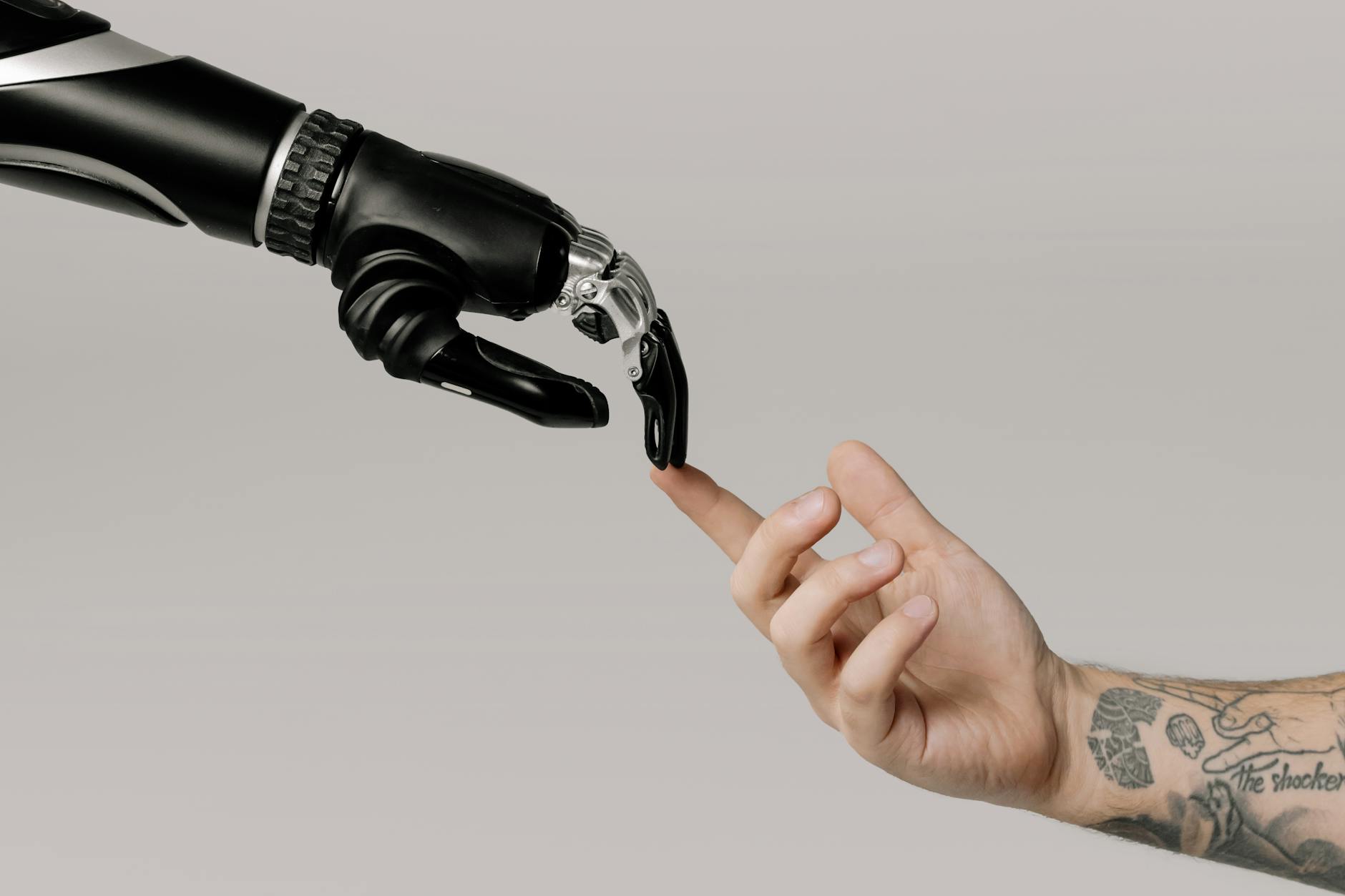Physical Address
304 North Cardinal St.
Dorchester Center, MA 02124
Physical Address
304 North Cardinal St.
Dorchester Center, MA 02124

AI Tools in 2025: Buckle up, because the AI tools in 2025 revolution are accelerating faster than we ever imagined! In just a few short years, the landscape of work as we know it will be dramatically transformed by AI tools in 2025. Are you ready for the seismic shift that’s coming?
Imagine waking up in 2025 to find that your job has been taken over by an AI tool in 2025. It’s not science fiction anymore—it’s a reality that’s rapidly approaching, and these AI tools in 2025 are set to disrupt every sector. From creative tasks to complex data analysis, AI tools in 2025 are encroaching on territories once thought to be exclusively human domains. But here’s the kicker: this change isn’t just coming; it’s already here, and it’s reshaping industries at breakneck speed, thanks to the power of AI tools in 2025.
In this eye-opening exploration, we’ll dive deep into the 10 revolutionary AI tools in 2025 that are set to replace human jobs faster than you think. We’ll uncover the results of groundbreaking surveys, examine global perspectives on AI training and regulation, and discuss how the advancements in AI tools in 2025 rival the impact of the steam engine. Get ready to embrace bigger ambitions and meet the AI tools in 2025 future head-on—because ready or not, AI tools in 2025 are coming for us all.

The survey on AI tools in 2025 revealed groundbreaking insights into the rapid advancement and adoption of artificial intelligence across various industries. Here are the main takeaways:
| Industry | AI Adoption Rate | Job Displacement Risk |
|---|---|---|
| Tech | 95% | High |
| Finance | 80% | Medium |
| Healthcare | 70% | Low |
| Retail | 65% | Medium |
The survey gathered responses from:
Data collection methods included:
The diverse sample ensured a comprehensive view of AI’s impact on the global workforce. Now that we’ve examined the survey’s scope and key findings, let’s explore how AI compares to historical innovations like the steam engine.

AI’s impact on society and industry is often compared to that of the steam engine during the Industrial Revolution. This comparison is not an exaggeration; AI is poised to reshape our world in ways we’re only beginning to understand.
AI is transforming various sectors at an unprecedented pace:
| Aspect | Steam Engine | AI |
|---|---|---|
| Era | Industrial Revolution | Fourth Industrial Revolution |
| Primary Impact | Physical labor | Cognitive tasks |
| Speed of Adoption | Decades | Years |
| Geographical Reach | Limited initially | Global from the start |
| Job Displacement | Manual workers | Knowledge workers |
The economic implications of AI are staggering. Like the steam engine, AI is:
However, AI’s potential for economic growth far exceeds that of the steam engine due to its ability to enhance decision-making processes and automate complex cognitive tasks.
Just as the steam engine reshaped society, AI is altering our daily lives:
As we explore AI’s potential, it’s crucial to consider both its benefits and challenges. The next section will delve into the concept of AI superagency and its implications for our future.

AI systems are rapidly advancing in their ability to understand context, reason through complex problems, and make informed decisions. This improvement in intelligence and reasoning capabilities is transforming various industries and job roles.
| Aspect | Impact on Jobs |
|---|---|
| Natural Language Processing | Enhancing customer service and content creation |
| Machine Learning | Improving data analysis and predictive modeling |
| Cognitive Computing | Augmenting decision-making processes |
AI agents are now capable of performing tasks with minimal human intervention. This autonomy is revolutionizing workflows and increasing efficiency across various sectors.
The integration of multiple data types is enabling AI to process and generate content across various formats, leading to more comprehensive and versatile applications.
Advancements in hardware, such as specialized AI chips and quantum computing, are significantly boosting AI performance and capabilities.
| Hardware Innovation | Performance Impact |
|---|---|
| AI-specific processors | Faster data processing |
| Quantum computing | Complex problem-solving |
| Edge computing devices | Real-time AI applications |
As AI systems become more prevalent, there’s a growing emphasis on explainable AI and transparent decision-making processes. This trend is crucial for building trust and ensuring responsible AI adoption in various industries.
Now that we’ve explored the key aspects of AI superagency, let’s examine how employees are adapting to these rapid advancements in AI technology.

As AI continues to revolutionize the workplace, we’ve reached a critical juncture where employees are not only ready for AI integration but are actively seeking it. This shift in mindset represents a significant opportunity for organizations to harness the power of AI and drive innovation.
| Employee Readiness Indicators | Percentage |
|---|---|
| Willing to use AI tools | 76% |
| Already using AI at work | 62% |
| Seeking AI training | 83% |
The data clearly shows that employees are embracing AI technology:
This widespread acceptance of AI among employees marks a turning point in the digital transformation of businesses across industries.
With employees showing such enthusiasm for AI adoption, the onus is now on leadership to capitalize on this momentum. Here are key areas where leaders can focus their investments:
By prioritizing these investments, leaders can create a workforce that is not only AI-ready but also capable of driving significant business growth and innovation. As we move forward, it’s clear that the success of AI implementation will largely depend on how well leaders can support and empower their employees in this technological shift.

AI has become ubiquitous in the modern workplace, with an overwhelming majority of employees incorporating AI tools into their daily tasks. A recent survey reveals that 85% of workers use at least one AI-powered application regularly, regardless of their initial skepticism or reservations about the technology. (The Best ChatGPT Alternatives You Shouldn’t Miss in 2025)
| Employee Group | AI Adoption Rate |
|---|---|
| Tech-savvy | 95% |
| Neutral | 82% |
| Skeptical | 78% |
The integration of AI spans various sectors, with different tools tailored to specific industry needs:
(The Best ChatGPT Alternatives You Shouldn’t Miss in 2025)
Even employees who were initially hesitant about AI have found themselves embracing these tools due to:
As AI continues to prove its value, the gap between early adopters and skeptics is narrowing, fostering a more unified approach to AI integration in the workplace.

As AI continues to reshape the workplace, C-suite leaders play a crucial role in empowering millennials to spearhead AI adoption and innovation. Millennials, who are often more tech-savvy and adaptable to new technologies, can be valuable assets in driving AI integration across organizations.
To leverage this potential, C-suite leaders should:
| Action | Benefits |
|---|---|
| Continuous learning culture | Keeps employees updated with AI advancements |
| Targeted AI training | Enhances specific AI skills relevant to roles |
| Cross-generational collaboration | Combines experience with tech-savviness |
| Mentorship programs | Facilitates knowledge transfer and skill development |
| Hands-on AI experience | Builds practical skills and confidence in AI usage |
With their influential positions, C-suite leaders have the unique opportunity to be bolder in their approach to AI adoption and training. This “permission space” allows them to:
By taking bold steps, leaders can accelerate AI adoption and ensure their organizations stay competitive in the rapidly evolving AI landscape. This proactive approach not only benefits the company but also prepares employees for the AI-driven future of work.

In the rapidly evolving landscape of AI tools, businesses face a critical challenge: balancing the need for swift implementation with ensuring robust safety measures. This dilemma is at the heart of AI adoption in 2025, as organizations strive to stay competitive while mitigating potential risks.
| Speed Advantages | Safety Concerns |
|---|---|
| Faster innovation | Data breaches |
| Improved efficiency | Algorithmic bias |
| Quick market adaptation | Ethical implications |
| Competitive edge | Regulatory compliance |
To navigate this complex terrain, companies are adopting multi-faceted strategies:
Despite the inherent challenges, a surprising trend has emerged: employees are placing significant trust in their leaders to navigate the AI landscape responsibly. This trust stems from several factors:
As AI tools continue to reshape the workplace in 2025, this trust will be crucial in fostering a positive environment for innovation and growth. Leaders must leverage this goodwill to implement AI solutions that are both cutting-edge and secure, ensuring their organizations remain at the forefront of technological advancement while maintaining the highest standards of safety and ethics.

As we delve into the global perspectives on AI regulation, it’s crucial to understand how different countries and regions are approaching the governance of this rapidly evolving technology. The varied approaches reflect the diverse cultural, economic, and political landscapes across the world.
Risk management for generative AI is a critical aspect of global regulation efforts. As these powerful AI systems become more prevalent, governments and organizations are grappling with how to harness their potential while mitigating associated risks.
Here’s a comparison of risk management approaches in different regions:
| Region | Regulatory Approach | Key Focus Areas |
|---|---|---|
| European Union | Comprehensive AI Act | Ethical AI, Data Protection |
| United States | Sector-specific regulations | Innovation, National Security |
| China | State-led AI development | Economic Growth, Social Control |
| Japan | Human-centric AI principles | Society 5.0, Harmonious Integration |
To effectively manage risks associated with generative AI, organizations and policymakers should consider:
As we move forward, it’s clear that a balanced approach to AI regulation is necessary. This approach should foster innovation while ensuring the responsible development and use of AI technologies. The next section will explore how different countries are working to deliver both speed and safety in their AI initiatives.

As we explore the future of AI in the workplace, it’s clear that organizations need to think beyond mere efficiency gains. Embracing bigger ambitions means leveraging AI to transform entire business models and create unprecedented value. Here’s how companies can aim higher with AI:
AI offers the potential to completely redesign core business processes. Consider the following ways AI can revolutionize operations:
AI can be a powerful catalyst for innovation across industries. Here’s how organizations can harness AI for groundbreaking advancements:
To truly embrace bigger ambitions, companies must scale AI initiatives enterprise-wide. Consider this framework for AI adoption:
| Stage | Focus | Key Actions |
|---|---|---|
| Pilot | Experimentation | Identify use cases, build prototypes |
| Expand | Departmental adoption | Develop AI centers of excellence, train employees |
| Transform | Enterprise-wide integration | Align AI strategy with business goals, create AI-first culture |
By thinking boldly and strategically about AI’s potential, organizations can position themselves at the forefront of innovation and competitive advantage in their respective industries.

AI adoption and investment levels differ significantly across industries, reflecting unique challenges and opportunities. Here’s a breakdown of AI investment trends:
| Industry | AI Investment Level | Key Focus Areas |
|---|---|---|
| Technology | High | Product innovation, customer experience |
| Financial Services | High | Risk management, fraud detection |
| Healthcare | Medium | Diagnostic tools, drug discovery |
| Manufacturing | Medium | Process automation, predictive maintenance |
| Retail | Medium | Personalization, inventory management |
| Education | Low | Adaptive learning, administrative tasks |
Industries like technology and financial services are leading the charge, while others are gradually increasing their AI investments.
Despite the growing adoption of AI, employees in certain sectors remain wary:
Several business functions still have significant potential for AI integration:
While generative AI shows promise, many organizations haven’t yet realized significant returns on investment. Factors contributing to this include:
However, as technology matures and best practices emerge, we expect to see improved ROI across industries.
Organizations with bold AI strategies are better positioned to tackle complex challenges. Examples include:
By thinking big, companies can leverage AI to create transformative solutions and gain a competitive edge in their respective industries.

AI tools are revolutionizing the way we manage our daily lives, offering unprecedented levels of efficiency and personalization. From smart home assistants to AI-powered productivity apps, these technologies are becoming integral to our personal routines.
AI-driven scheduling tools are transforming how we organize our days. These intelligent systems can:
| Feature | Benefit |
|---|---|
| Pattern Recognition | Identifies peak productivity hours |
| Smart Scheduling | Reduces conflicts and optimizes calendar |
| Dynamic Prioritization | Ensures focus on high-impact tasks |
AI is making significant strides in personal health management. Wearable devices coupled with AI algorithms can:
These advancements are empowering individuals to take proactive control of their well-being, leading to improved overall health outcomes and quality of life.
AI-powered educational platforms are tailoring learning experiences to individual needs and learning styles. These systems adapt in real-time, providing:
This personalized approach to education is making lifelong learning more accessible and effective than ever before.

While AI technology is advancing rapidly, many organizations face significant operational challenges that hinder their ability to scale AI implementations effectively. These headwinds can be categorized into three main areas:
Let’s explore each of these challenges in more detail:
| Operational Headwind | Description | Impact on AI Scaling |
|---|---|---|
| Data and infrastructure | Lack of quality data, poor data governance, outdated IT systems | Slows down AI model development and deployment |
| Skill gaps and talent shortages | Insufficient AI expertise, difficulty in attracting and retaining AI professionals | Limits the organization’s capacity to develop and maintain AI solutions |
| Organizational culture and change management | Resistance to change, siloed departments, lack of cross-functional collaboration | Impedes the adoption and integration of AI across the organization |
To overcome these headwinds, organizations must:
Realizing the full potential of AI requires more than just implementing new technologies. Leaders must fundamentally transform their organizations to create an environment conducive to AI innovation and adoption. This rewiring process involves:
By addressing these key areas, companies can create a solid foundation for scaling AI across their operations and capturing its full value. Leaders who successfully navigate this transformation will position their organizations at the forefront of the AI revolution, gaining a significant competitive advantage in the rapidly evolving business landscape.

As we look towards the future of AI in the workplace, it’s crucial to understand how to prepare for this technological shift. Here are key strategies for meeting the AI future:
To stay relevant in an AI-driven job market, workers must focus on:
| Human Skills | AI Capabilities | Synergy |
|---|---|---|
| Creativity | Data Processing | Enhanced Innovation |
| Empathy | Pattern Recognition | Improved Customer Service |
| Strategy | Predictive Analytics | Informed Decision Making |
As AI becomes more prevalent, it’s essential to address:
Companies must prepare for AI integration by:
By embracing these strategies, individuals and organizations can position themselves to thrive in the AI-driven future of work. As we move forward, it’s important to remember that AI is a tool to augment human capabilities, not replace them entirely.

AI refers to the simulation of human intelligence in machines programmed to think and learn like humans. It encompasses various subfields and technologies aimed at creating intelligent systems.
Machine Learning is a subset of AI that focuses on developing algorithms and statistical models that enable computer systems to improve their performance on a specific task through experience, without being explicitly programmed.
Deep Learning is a specialized form of Machine Learning that uses artificial neural networks with multiple layers to model and process complex patterns in data, often achieving human-like performance in tasks such as image and speech recognition.
NLP is a branch of AI that deals with the interaction between computers and human language. It enables machines to understand, interpret, and generate human language in a valuable way.
| AI Type | Primary Focus | Key Applications |
|---|---|---|
| General AI | Broad human-like intelligence | Still theoretical |
| Narrow AI | Specific tasks | Virtual assistants, recommendation systems |
| Strong AI | Self-aware, conscious machines | Not yet achieved |
Generative AI refers to advanced AI tools in 2025 that are capable of creating new content—such as text, images, videos, or music—by learning patterns from existing data. These AI tools in 2025 have captured massive attention for their creative and practical applications, from generating realistic human conversations to designing artwork, composing songs, and even writing code. As generative capabilities become more refined, AI tools in 2025 are not only transforming industries like marketing, entertainment, and design but also reshaping how humans approach creativity and innovation.

We would like to express our sincere gratitude to the following individuals and organizations who have made significant contributions to this research on AI tools in 2025:
Our research wouldn’t have been possible without access to valuable data and support from:
| Organization | Contribution |
|---|---|
| IBM Watson | Data analytics |
| Microsoft Research | AI model benchmarking |
| Stanford AI Lab | Technical consultation |
| World Economic Forum | Industry trends |
We extend our heartfelt appreciation to:
Your collective efforts have been instrumental in shaping this comprehensive analysis of AI tools and their impact on the job market in 2025. We believe this research will contribute significantly to our understanding of AI’s role in the workforce and help guide future policy decisions.

The rapid advancement of AI tools in 2025 is reshaping the workplace landscape at an unprecedented pace. As we’ve explored in this post, AI tools in 2025 are not just augmenting human capabilities—they’re increasingly taking over entire job functions. From AI superagencies to the widespread adoption of AI tools in 2025 across various industries, it’s clear that we are on the cusp of a technological revolution as significant as the steam engine.
While employees are increasingly ready to embrace AI tools in 2025, the onus is now on leaders to guide this transformation effectively. As we look toward 2025 and beyond, adapting to AI tools in 2025 becomes crucial for both individuals and organizations. Upskilling, reskilling, and reimagining roles will be key to thriving in an AI tools in 2025 environment.
By embracing the potential of AI tools in 2025 to enhance both our professional and personal lives, we can harness their power to build more efficient, innovative, and fulfilling work environments. The future of AI tools in 2025 is not just about replacing jobs—it’s about creating new opportunities, redefining work, and unlocking the next frontier of human potential.